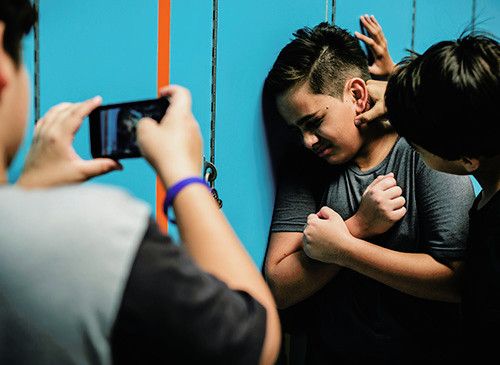
Teasing is a part of life. Sometimes it helps us, sometimes it hurts us. Some teachers feel strongly that their classrooms need to be TEASE-FREE ZONES, but teasing is not going away, and learning how to deal with teasing effectively is a lifelong problem-solving skill. When approached the right way, the classroom can be the ideal place to teach that skill.
Teasing is a human social exchange that can be perceived as friendly, neutral or negative. The goal of productive teasing is to create closer relationships and make connections. Pro-social teasing helps to satisfy a fundamental human motivation -- to be an integral part of a group.
The benefits of teasing include:
- It can be playful
- Promotes social affiliations
- Allows people to better deal with awkward situations
- Helps to bring both the teaser and the person being teased closer together
Sometimes simple teasing can go too far. Teasing turns into bullying when kids use it to gain greater social status or when the intent of what is said or done is to harm. Teaching kids the difference between teasing and bullying can avoid hurt feelings, improve relationships and prevent an exchange from crossing the line into bullying. The best way to help your students deal with teasing is to teach them to understand it.
Here are some helpful tips:
- Define the differences between teasing and bullying with your students:
- Teasing creates stronger relationships while bullying damages relationships.
- Teasing adds to your character as a person while bullying takes away from your character.
- Teasing occurs between equals (age, power, intelligence, friendships) while bullying occurs between people who are unequal.
- Teasing maintains dignity and respect toward a person while bullying is done to embarrass or hurt the feelings of a person.
- Teasing may include harmless nicknames that the recipient also thinks are funny. Calling a person names that are derogatory or directed at his or her religion, ethnicity, speech, appearance, etc., is bullying.
- Teach your students how to tease and accept teasing through body language, laughter and sarcasm so that he or she can see the differences between a serious and joking interaction. Use examples of each from your past, and share them with your students.
- Listen to your students without disagreement. If a child tells you that one of her classmates said her clothes are ugly, don’t jump in to reassure the child that her clothes are beautiful. If you do that, you infer to her that she has been victimized. Instead, listen carefully to what the child is telling you, and then work with her to come up with a plan to address this situation the next time it happens. (When the situation warrants, address the behavior with the person who made the negative statement.)
- Teach your students how to effectively respond when teasing turns into bullying:
- Remain calm, but serious.
- Assertively ask the person to stop the bullying behavior.
- If the behavior does not stop, ignore the person or remove yourself from the situation.
- If the behavior stops, thank the other person for stopping and explain how the behavior is making you feel.
- Report continued bullying or hazing to an adult at school or an adult at home that you can trust. If you don’t want to tell him or her in person, write him or her a note. Signing your name on the note can be optional.
Basically, what it boils down to, is teasing is just like math…
“A MEAN tease bite is negative (-), and it takes away from your life.
It divides you in half, and can even make you cry.
Mean teasing is bullying, and it’s not a good thing.
The ones that do it are trying to be mean.
It’s a mean tease bite when it comes from someone who doesn’t care about you and wants to embarrass you or make you feel bad on purpose.
A NICE tease bite is positive (+), and it adds to your life.
It multiplies your strength and your voice that’s inside.
It can help you solve problems in humorous ways.
It can get you through life on the not-so-great-days.
A nice tease comes from someone who cares about you and would not want to hurt you or make you feel bad. Nice teases are good because they can help you build better relationships with other ones.”
-Excerpt from Tease Monster by Julia Cook available from Boys Town Press.
